Carbon Quantum Dots from Lemon Waste Enable Communication among Biodevices
Abstract
1. Introduction
2. Materials and Methods
3. Results
4. Conclusions
Author Contributions
Funding
Institutional Review Board Statement
Informed Consent Statement
Data Availability Statement
Acknowledgments
Conflicts of Interest
References
- Farsad, N.; Eckford, A.W.; Hiyama, S.; Moritani, Y. On-Chip Molecular Communication: Analysis and Design. IEEE Trans. Nanobioscience 2012, 11, 304–314. [Google Scholar] [CrossRef] [PubMed]
- Jackson, B.D.; Morgan, E.D. Insect chemical communication: Pheromones and exocrine glands of ants. Chemoecology 1993, 4, 125–144. [Google Scholar] [CrossRef]
- Granström, K.M. Wood processing as a source of terpene emissions compared to natural sources. In Air Pollution XV; WIT Press: Southampton, UK, 2007; Volume I, pp. 263–272. [Google Scholar]
- Darragh, K.; Orteu, A.; Black, D.; Byers, K.J.R.P.; Szczerbowski, D.; Warren, I.A.; Rastas, P.; Pinharanda, A.; Davey, J.W.; Garza, S.F.; et al. A novel terpene synthase controls differences in anti-aphrodisiac pheromone production between closely related Heliconius butterflies. PLoS Biol. 2021, 19, e3001022. [Google Scholar] [CrossRef] [PubMed]
- Fichera, L.; Li-Destri, G.; Tuccitto, N. Nanoparticles as suitable messengers for molecular communication. Nanoscale 2020, 12, 22386–22397. [Google Scholar] [CrossRef]
- Fichera, L.; Li-Destri, G.; Tuccitto, N. Fluorescent nanoparticle-based Internet of things. Nanoscale 2020, 12, 9817–9823. [Google Scholar] [CrossRef] [PubMed]
- Moritani, Y.; Hiyama, S.; Suda, T. Molecular communication for health care applications. In Proceedings of the Fourth Annual IEEE International Conference on Pervasive Computing and Communications Workshops (PERCOMW’06), Pisa, Italy, 13–17 March 2006; p. 5553. [Google Scholar]
- Unluturk, B.D.; Akyildiz, I.F. An End-to-End Model of Plant Pheromone Channel for Long Range Molecular Communication. IEEE Trans. Nanobioscience 2017, 16, 11–20. [Google Scholar] [CrossRef] [PubMed]
- Meng, L.-S.; Yeh, P.-C.; Chen, K.-C.; Akyildiz, I.F. On Receiver Design for Diffusion-Based Molecular Communication. IEEE Trans. Signal Process. 2014, 62, 6032–6044. [Google Scholar] [CrossRef]
- McGuiness, D.T.; Giannoukos, S.; Marshall, A.; Taylor, S. Experimental Results on the Open-Air Transmission of Macro-Molecular Communication Using Membrane Inlet Mass Spectrometry. IEEE Commun. Lett. 2018, 22, 2567–2570. [Google Scholar] [CrossRef]
- Moore, M.J.; Nakano, T.; Enomoto, A.; Suda, T. Measuring Distance From Single Spike Feedback Signals in Molecular Communication. IEEE Trans. Signal Process. 2012, 60, 3576–3587. [Google Scholar] [CrossRef]
- ShahMohammadian, H.; Messier, G.G.; Magierowski, S. Blind Synchronization in Diffusion-Based Molecular Communication Channels. IEEE Commun. Lett. 2013, 17, 2156–2159. [Google Scholar] [CrossRef]
- Huang, Y.; Wen, M.; Yang, L.-L.; Chae, C.-B.; Ji, F. Spatial Modulation for Molecular Communication. IEEE Trans. Nanobiosci. 2019, 18, 381–395. [Google Scholar] [CrossRef] [PubMed]
- Kuran, M.S.; Yilmaz, H.B.; Demirkol, I.; Farsad, N.; Goldsmith, A. A Survey on Modulation Techniques in Molecular Communication via Diffusion. IEEE Commun. Surv. Tutorials 2021, 23, 7–28. [Google Scholar] [CrossRef]
- Qiu, S.; Guo, W.; Wang, S.; Farsad, N.; Eckford, A. A molecular communication link for monitoring in confined environments. In Proceedings of the 2014 IEEE International Conference on Communications Workshops (ICC), Sydney, NSW, Australia, 10–14 June 2014; pp. 718–723. [Google Scholar]
- Akdeniz, B.C.; Pusane, A.E.; Tugcu, T. Optimal Reception Delay in Diffusion-Based Molecular Communication. IEEE Commun. Lett. 2018, 22, 57–60. [Google Scholar] [CrossRef]
- Tuccitto, N.; Li-Destri, G.; Messina, G.M.L.; Marletta, G. Fluorescent Quantum Dots Make Feasible Long-Range Transmission of Molecular Bits. J. Phys. Chem. Lett. 2017, 8, 3861–3866. [Google Scholar] [CrossRef]
- Thiyagarajan, S.K.; Raghupathy, S.; Palanivel, D.; Raji, K.; Ramamurthy, P. Fluorescent carbon nano dots from lignite: Unveiling the impeccable evidence for quantum confinement. Phys. Chem. Chem. Phys. 2016, 18, 12065–12073. [Google Scholar] [CrossRef][Green Version]
- Chatzimitakos, T.G.; Stalikas, C.D. Carbon nanodots from natural (re)sources: A new perspective on analytical chemistry. In Handbook of Nanomaterials in Analytical Chemistry; Elsevier: Amsterdam, The Netherlands, 2020; pp. 3–28. [Google Scholar]
- Zhang, Z.; Sun, W.; Wu, P. Highly Photoluminescent Carbon Dots Derived from Egg White: Facile and Green Synthesis, Photoluminescence Properties, and Multiple Applications. ACS Sustain. Chem. Eng. 2015, 3, 1412–1418. [Google Scholar] [CrossRef]
- Liang, Q.; Ma, W.; Shi, Y.; Li, Z.; Yang, X. Easy synthesis of highly fluorescent carbon quantum dots from gelatin and their luminescent properties and applications. Carbon N. Y. 2013, 60, 421–428. [Google Scholar] [CrossRef]
- Liu, M.; Xu, Y.; Niu, F.; Gooding, J.J.; Liu, J. Carbon quantum dots directly generated from electrochemical oxidation of graphite electrodes in alkaline alcohols and the applications for specific ferric ion detection and cell imaging. Analyst 2016, 141, 2657–2664. [Google Scholar] [CrossRef]
- Sahu, S.; Behera, B.; Maiti, T.K.; Mohapatra, S. Simple one-step synthesis of highly luminescent carbon dots from orange juice: Application as excellent bio-imaging agents. Chem. Commun. 2012, 48, 8835–8837. [Google Scholar] [CrossRef]
- Food and Agriculture Organization of the United Nations (FAO). Citrus: World Markets and Trade; United States Department of Agriculture Foreign Agricultural Service: Washington, DC, USA, 2017; pp. 1–13.
- Singh, V.; Deverall, B.J. Bacillus subtilis as a control agent against fungal pathogens of citrus fruit. Trans. Br. Mycol. Soc. 1984, 83, 487–490. [Google Scholar] [CrossRef]
- Gerez, C.L.; Carbajo, M.S.; Rollán, G.; Leal, G.T.; de Valdez, G.F. Inhibition of Citrus Fungal Pathogens by Using Lactic Acid Bacteria. J. Food Sci. 2010, 75, M354–M359. [Google Scholar] [CrossRef] [PubMed]
- Song, Y.; Zhu, S.; Xiang, S.; Zhao, X.; Zhang, J.; Zhang, H.; Fu, Y.; Yang, B. Investigation into the fluorescence quenching behaviors and applications of carbon dots. Nanoscale 2014, 6, 4676–4682. [Google Scholar] [CrossRef]
- Yao, Y.; Niu, D.; Lee, C.H.; Li, Y.; Li, P. Aqueous Synthesis of Multi-Carbon Dot Cross-Linked Polyethyleneimine Particles with Enhanced Photoluminescent Properties. Macromol. Rapid Commun. 2019, 40, e1800869. [Google Scholar] [CrossRef] [PubMed]
- Wang, C.; Xu, Z.; Zhang, C. Polyethyleneimine-Functionalized Fluorescent Carbon Dots: Water Stability, pH Sensing, and Cellular Imaging. ChemNanoMat 2015, 1, 122–127. [Google Scholar] [CrossRef]
- Wu, X.; Wu, L.; Cao, X.; Li, Y.; Liu, A.; Liu, S. Nitrogen-doped carbon quantum dots for fluorescence detection of Cu2+ and electrochemical monitoring of bisphenol A. RSC Adv. 2018, 8, 20000–20006. [Google Scholar] [CrossRef]
- Park, Y.; Yoo, J.; Lim, B.; Kwon, W.; Rhee, S.-W. Improving the functionality of carbon nanodots: Doping and surface functionalization. J. Mater. Chem. A 2016, 4, 11582–11603. [Google Scholar] [CrossRef]
- Zhu, X.; Liao, Q.; Liu, Q.; Wang, H.; Ding, Y.; Zeng, F. Synthesis of polyethylenimine-impregnated Al-fumarate metal-organic framework and its CO2 adsorption characteristics. Chin. Sci. Bull. 2019, 64, 2441–2449. [Google Scholar] [CrossRef]
- Quang, D.V.; Dindi, A.; Rayer, A.V.; Hadri, N.E.; Abdulkadir, A.; Abu-Zahra, M.R.M. Impregnation of Amines Onto Porous Precipitated Silica for CO2 capture. Energy Procedia 2014, 63, 2122–2128. [Google Scholar] [CrossRef]
- Manioudakis, J.; Victoria, F.; Thompson, C.A.; Brown, L.; Movsum, M.; Lucifero, R.; Naccache, R. Effects of nitrogen-doping on the photophysical properties of carbon dots. J. Mater. Chem. C 2019, 7, 853–862. [Google Scholar] [CrossRef]
- Barman, M.K.; Jana, B.; Bhattacharyya, S.; Patra, A. Photophysical Properties of Doped Carbon Dots (N, P, and B) and Their Influence on Electron/Hole Transfer in Carbon Dots–Nickel (II) Phthalocyanine Conjugates. J. Phys. Chem. C 2014, 118, 20034–20041. [Google Scholar] [CrossRef]
- Liu, C.; Zhang, P.; Zhai, X.; Tian, F.; Li, W.; Yang, J.; Liu, Y.; Wang, H.; Wang, W.; Liu, W. Nano-carrier for gene delivery and bioimaging based on carbon dots with PEI-passivation enhanced fluorescence. Biomaterials 2012, 33, 3604–3613. [Google Scholar] [CrossRef]
- Yang, Y.; Kong, W.; Li, H.; Liu, J.; Yang, M.; Huang, H.; Liu, Y.; Wang, Z.; Wang, Z.; Sham, T.-K.; et al. Fluorescent N-Doped Carbon Dots as in Vitro and in Vivo Nanothermometer. ACS Appl. Mater. Interfaces 2015, 7, 27324–27330. [Google Scholar] [CrossRef] [PubMed]
- Ma, X.; Li, S.; Hessel, V.; Lin, L.; Meskers, S.; Gallucci, F. Synthesis of N-doped carbon dots via a microplasma process. Chem. Eng. Sci. 2020, 220, 115648. [Google Scholar] [CrossRef]
- Liu, X.; Liu, J.; Zheng, B.; Yan, L.; Dai, J.; Zhuang, Z.; Du, J.; Guo, Y.; Xiao, D. N-Doped carbon dots: Green and efficient synthesis on a large-scale and their application in fluorescent pH sensing. New J. Chem. 2017, 41, 10607–10612. [Google Scholar] [CrossRef]
- Lu, S.; Guo, S.; Xu, P.; Li, X.; Zhao, Y.; Gu, W.; Xue, M. Hydrothermal synthesis of nitrogen-doped carbon dots with real-time live-cell imaging and blood–brain barrier penetration capabilities. Int. J. Nanomed. 2016, 11, 6325–6336. [Google Scholar] [CrossRef] [PubMed]
- Stefanakis, D.; Philippidis, A.; Sygellou, L.; Filippidis, G.; Ghanotakis, D.; Anglos, D. Synthesis of fluorescent carbon dots by a microwave heating process: Structural characterization and cell imaging applications. J. Nanoparticle Res. 2014, 16, 2646. [Google Scholar] [CrossRef]
- Zhang, W.; Shi, L.; Liu, Y.; Meng, X.; Xu, H.; Xu, Y.; Liu, B.; Fang, X.; Li, H.-B.; Ding, T. Supramolecular interactions via hydrogen bonding contributing to citric-acid derived carbon dots with high quantum yield and sensitive photoluminescence. RSC Adv. 2017, 7, 20345–20353. [Google Scholar] [CrossRef]
- Li, L.; Liu, D.; Mao, H.; You, T. Multifunctional solid-state electrochemiluminescence sensing platform based on poly(ethylenimine) capped N-doped carbon dots as novel co-reactant. Biosens. Bioelectron. 2017, 89, 489–495. [Google Scholar] [CrossRef]
- Dong, X.; Su, Y.; Geng, H.; Li, Z.; Yang, C.; Li, X.; Zhang, Y. Fast one-step synthesis of N-doped carbon dots by pyrolyzing ethanolamine. J. Mater. Chem. C 2014, 2, 7477–7481. [Google Scholar] [CrossRef]
- Xu, M.; He, G.; Li, Z.; He, F.; Gao, F.; Su, Y.; Zhang, L.; Yang, Z.; Zhang, Y. A green heterogeneous synthesis of N-doped carbon dots and their photoluminescence applications in solid and aqueous states. Nanoscale 2014, 6, 10307–10315. [Google Scholar] [CrossRef]
- Wang, W.; Damm, C.; Walter, J.; Nacken, T.J.; Peukert, W. Photobleaching and stabilization of carbon nanodots produced by solvothermal synthesis. Phys. Chem. Chem. Phys. 2016, 18, 466–475. [Google Scholar] [CrossRef]
- Tuccitto, N.; Li-Destri, G.; Messina, G.M.L.; Marletta, G. Reactive messengers for digital molecular communication with variable transmitter—Receiver distance. Phys. Chem. Chem. Phys. 2018, 20, 30312–30320. [Google Scholar] [CrossRef]
- Brannon, J.H.; Magde, D. Absolute quantum yield determination by thermal blooming. Fluorescein. J. Phys. Chem. 1978, 82, 705–709. [Google Scholar] [CrossRef]
- Thakur, M.S.; Bhatia, V. Performance Analysis of Flow Assisted Diffusion Based Molecular Communication for D-MoSK. In Proceedings of the 2018 IEEE 87th Vehicular Technology Conference (VTC Spring), Porto, Portugal, 3–6 June 2018; pp. 1–6. [Google Scholar]
- Pierobon, M.; Akyildiz, I.F. Noise Analysis in Ligand-Binding Reception for Molecular Communication in Nanonetworks. IEEE Trans. Signal Process. 2011, 59, 4168–4182. [Google Scholar] [CrossRef][Green Version]
- Kadloor, S.; Adve, R.S.; Eckford, A.W. Molecular Communication Using Brownian Motion with Drift. IEEE Trans. Nanobioscience 2012, 11, 89–99. [Google Scholar] [CrossRef]
- Chude-Okonkwo, U.A.K.; Malekian, R.; Maharaj, B.T.; Vasilakos, A.V. Molecular Communication and Nanonetwork for Targeted Drug Delivery: A Survey. IEEE Commun. Surv. Tutor. 2017, 19, 3046–3096. [Google Scholar] [CrossRef]
- Jamali, V.; Ahmadzadeh, A.; Wicke, W.; Noel, A.; Schober, R. Channel Modeling for Diffusive Molecular Communication—A Tutorial Review. Proc. IEEE 2019, 107, 1256–1301. [Google Scholar] [CrossRef]
- Yang, K.; Bi, D.; Deng, Y.; Zhang, R.; Ur Rahman, M.M.; Ali, N.A.; Imran, M.A.; Jornet, J.M.; Abbasi, Q.H.; Alomainy, A. A comprehensive survey on hybrid communication for internet of nano-things in context of body-centric communications. arXiv 2019, arXiv:1912.09424. [Google Scholar]
- Berman, A.S. Laminar Flow in Channels with Porous Walls. J. Appl. Phys. 1953, 24, 1232–1235. [Google Scholar] [CrossRef]
- Bicen, A.O.; Akyildiz, I.F. System-Theoretic Analysis and Least-Squares Design of Microfluidic Channels for Flow-Induced Molecular Communication. IEEE Trans. Signal Process. 2013, 61, 5000–5013. [Google Scholar] [CrossRef]
- Arjmandi, H.; Ahmadzadeh, A.; Schober, R.; Kenari, M.N. Ion Channel Based Bio-Synthetic Modulator for Diffusive Molecular Communication. IEEE Trans. Nanobioscience 2016, 15, 418–432. [Google Scholar] [CrossRef] [PubMed]
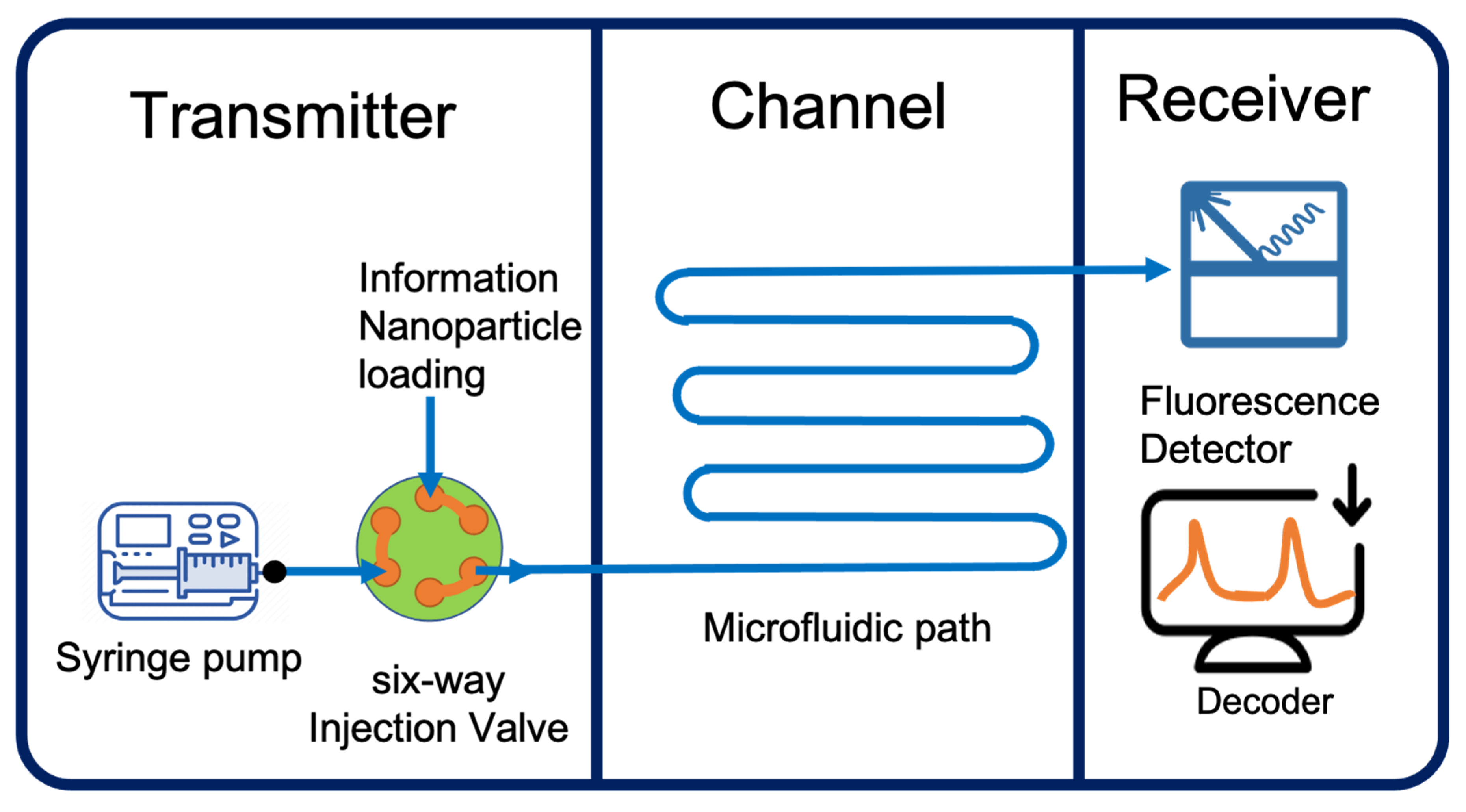


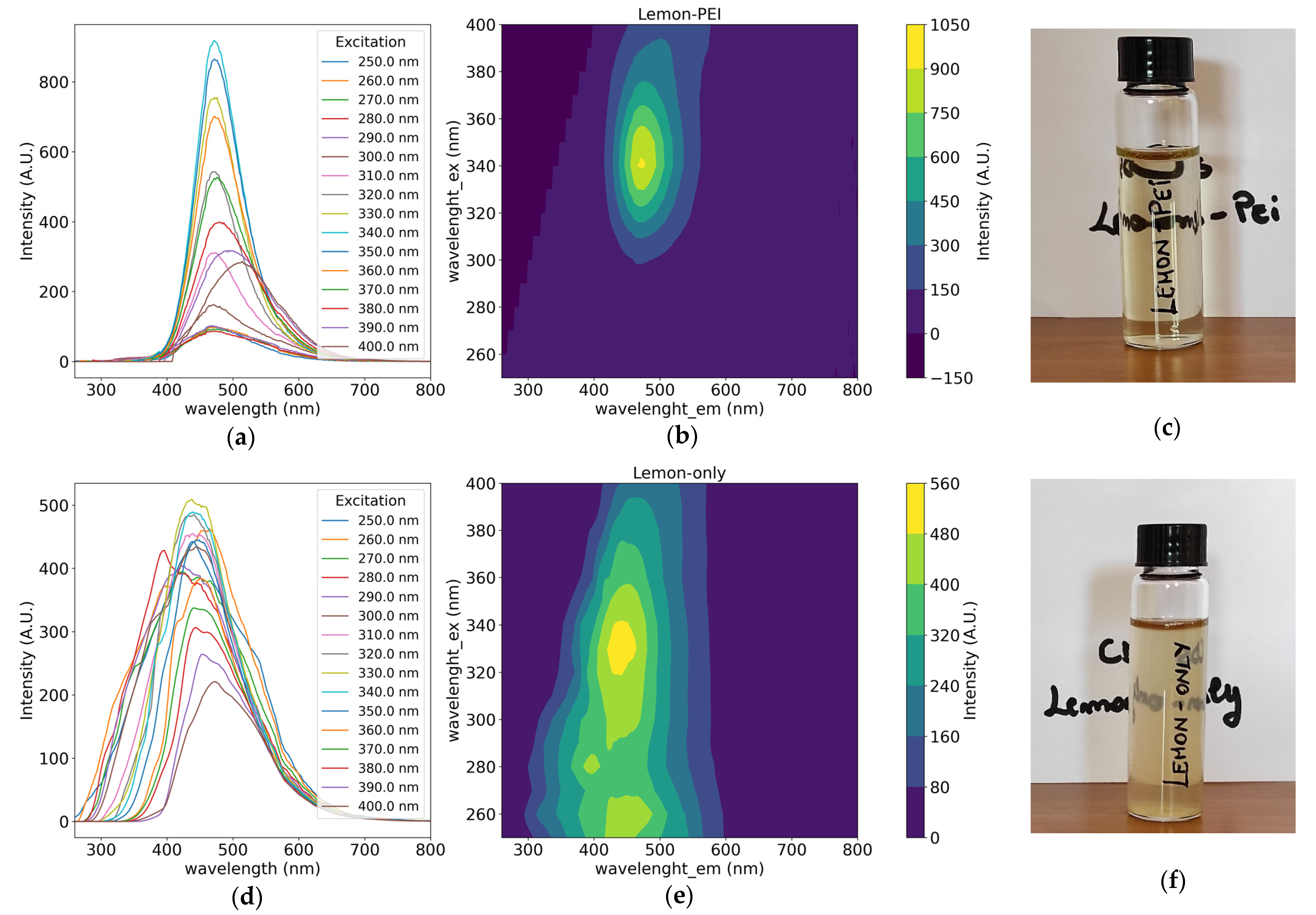
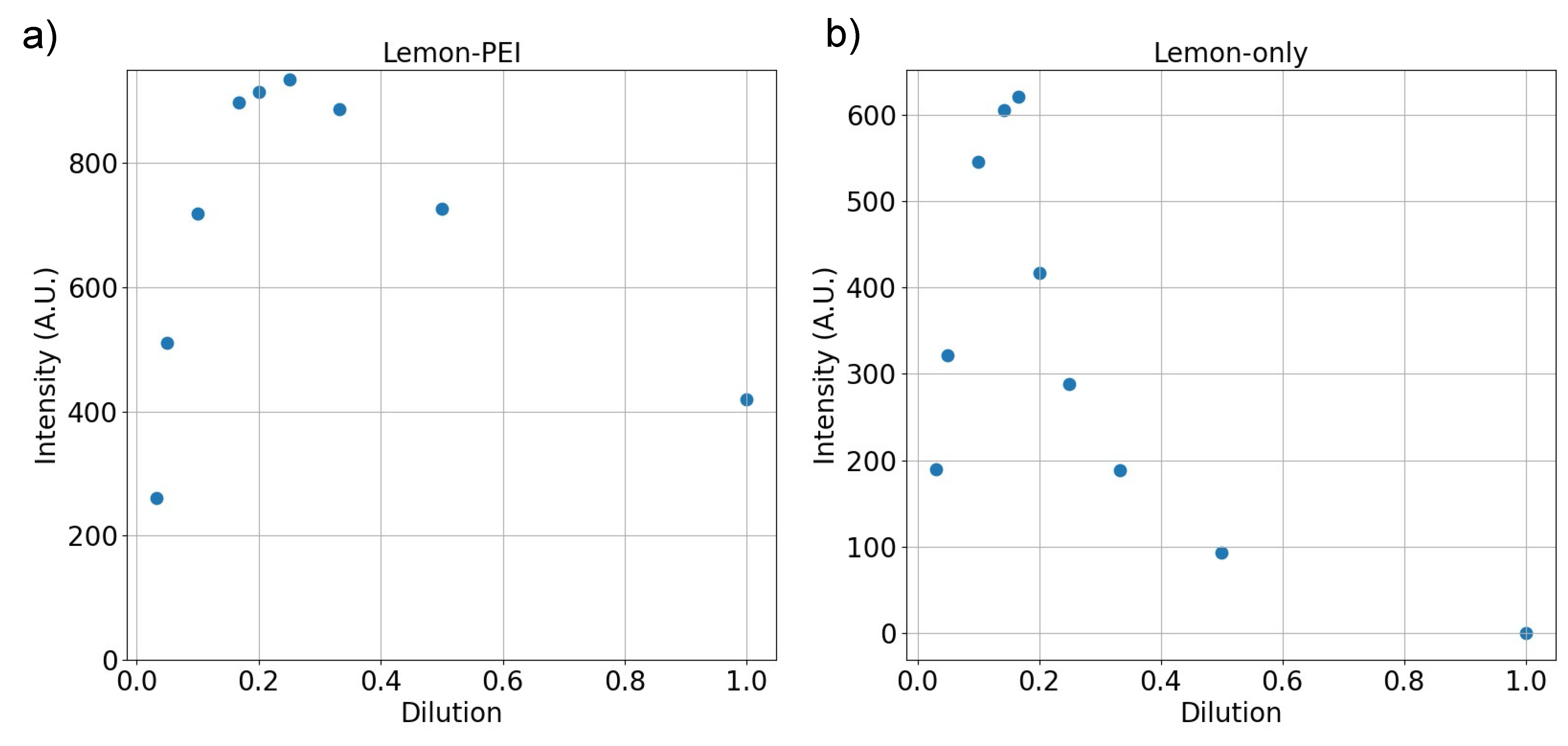
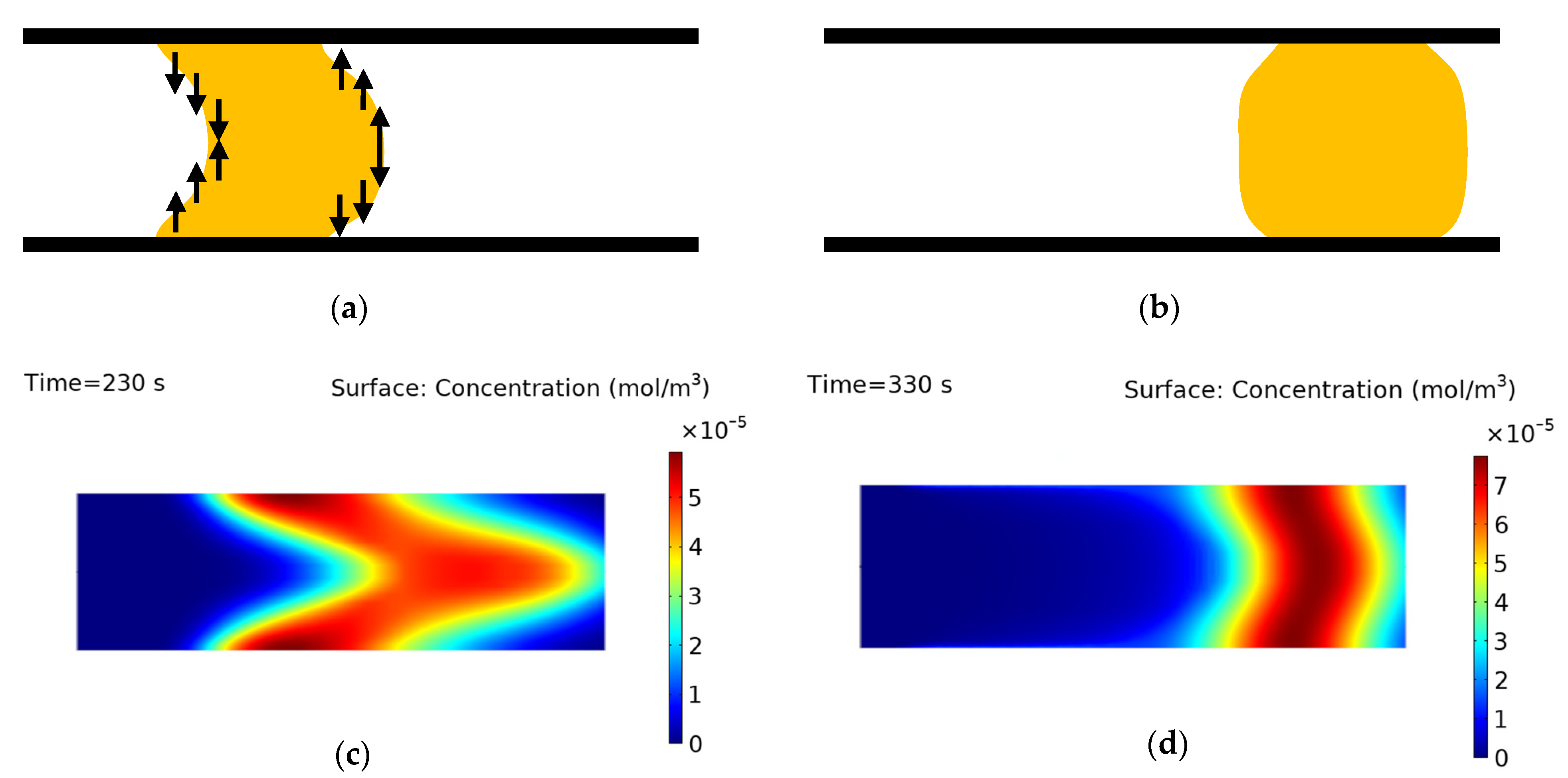
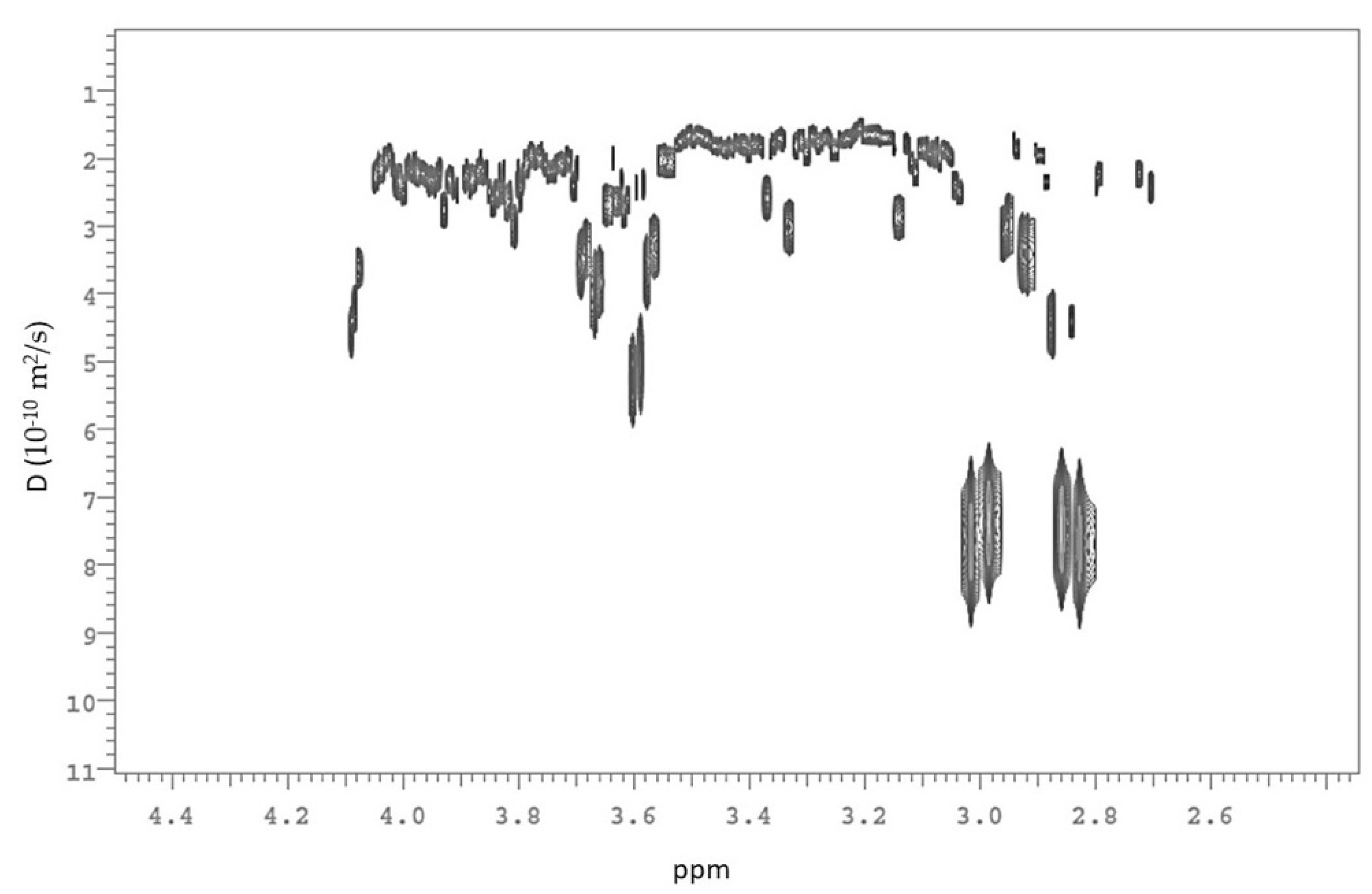

Publisher’s Note: MDPI stays neutral with regard to jurisdictional claims in published maps and institutional affiliations. |
© 2021 by the authors. Licensee MDPI, Basel, Switzerland. This article is an open access article distributed under the terms and conditions of the Creative Commons Attribution (CC BY) license (https://creativecommons.org/licenses/by/4.0/).
Share and Cite
Calì, F.; Cantaro, V.; Fichera, L.; Ruffino, R.; Trusso Sfrazzetto, G.; Li-Destri, G.; Tuccitto, N. Carbon Quantum Dots from Lemon Waste Enable Communication among Biodevices. Chemosensors 2021, 9, 202. https://doi.org/10.3390/chemosensors9080202
Calì F, Cantaro V, Fichera L, Ruffino R, Trusso Sfrazzetto G, Li-Destri G, Tuccitto N. Carbon Quantum Dots from Lemon Waste Enable Communication among Biodevices. Chemosensors. 2021; 9(8):202. https://doi.org/10.3390/chemosensors9080202
Chicago/Turabian StyleCalì, Federico, Valentina Cantaro, Luca Fichera, Roberta Ruffino, Giuseppe Trusso Sfrazzetto, Giovanni Li-Destri, and Nunzio Tuccitto. 2021. "Carbon Quantum Dots from Lemon Waste Enable Communication among Biodevices" Chemosensors 9, no. 8: 202. https://doi.org/10.3390/chemosensors9080202
APA StyleCalì, F., Cantaro, V., Fichera, L., Ruffino, R., Trusso Sfrazzetto, G., Li-Destri, G., & Tuccitto, N. (2021). Carbon Quantum Dots from Lemon Waste Enable Communication among Biodevices. Chemosensors, 9(8), 202. https://doi.org/10.3390/chemosensors9080202






